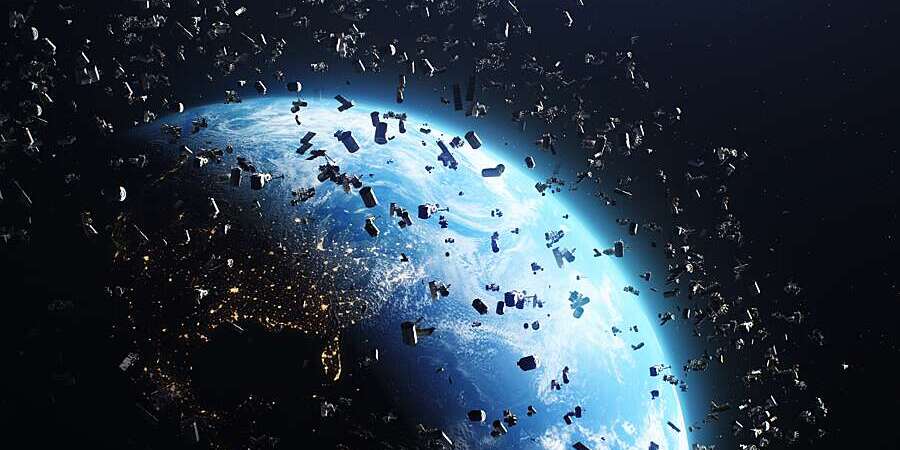Innovative Computational Approaches to Space Debris Management
 Pranavi Bathi
Pranavi Bathi
Abstract:
One of the most challenging issues in current and future human exploration with satellites is the exponential growth rate into space. This paper aims to discover the best solutions for minimizing space debris using advanced computational techniques. As a CSE student with an enthusiasm for bridging the technical world with outer space missions, I undertook this project. Machine learning and artificial intelligence (AI) can help predict where debris will be when it becomes large enough to require action. The use of optimization algorithms could enable more efficient end-to-end solutions for tracking, predicting, and removing space junk from orbit. This paper presents a comprehensive overview and analysis of both existing and emerging computational methods that could potentially be used in managing space debris. The insights offered in this paper are intended to enrich academic discussions and provide a platform for advancing research in this crucial area, hopefully leading to collaborations with key space agencies like NASA.
1. Introduction:
Space has been a revolutionary step towards exploring our universe, but it has also led to an overlooked issue: space debris. This debris, ranging from dead satellites to fragments of rockets and spacecraft parts left in orbit, threatens operational space missions, including the International Space Station (ISS), a significant player in upcoming interplanetary missions. The Kessler Syndrome illustrates the urgency of this issue, where the density of objects in Low Earth Orbit (LEO) could result in cascading collisions. As a Computer Science (Btech CSE) student, I aim to contribute to solving the global problem of increasing space debris by researching advanced computational techniques for Active Mitigation Of Space Debris (AMIT). This paper provides a holistic view of the current state of space debris management and emphasizes the crucial role of computer science in offering viable solutions. It serves as a foundation for future research that may prove valuable and act as a springboard for significant future work, possibly in collaboration with NASA.
2. Space Debris: The Fastest Growing Space Threat
Space debris is any human-made object in orbit that no longer serves a useful purpose, ranging from defunct satellites to fragments from collisions or explosions. The growing problem of space debris in LEO has raised concerns among scientists, engineers, and policymakers. Challenges include damage to active satellites, increased costs for space missions, and even existential threats to crew members aboard the ISS. Given the size and nature of the space debris problem, its solution requires a multidisciplinary approach, where computer science plays a vital role by providing the tools and techniques needed to monitor, model, and minimize space debris.
3. Computational Approaches for Space Debris Policy Support
3.1 Data Acquisition and Processing:
Accurate data acquisition and processing is the foundation of any policy for space debris management. Debris is detected and tracked using ground-based radar systems, optical telescopes, and spaceborne sensors. However, the sheer volume of data generated by these systems requires sophisticated computational methodologies for accurate processing and interpretation.
Machine learning algorithms, especially deep-learning-based models, are proposed to enhance debris detection accuracy. These algorithms excel in filtering noise, recognizing patterns, and tracking data. Cloud computing platforms provide the computational power needed to process enormous volumes of data at high speeds, making predictions on future debris trajectories more precise.
3.2 Predictive Modeling and Simulation:
Predictive modeling is crucial for space debris management, allowing researchers to simulate debris behavior in outer space, predict possible collisions, and plan avoidance strategies. Computational tools like finite element analysis (FEA) and computational fluid dynamics (CFD) are used to simulate the dynamics and physical properties of debris objects.
AI-powered predictive models, particularly those using reinforcement learning, are gaining importance. Reinforcement learning algorithms iteratively improve their predictions, making them valuable for real-time debris tracking and collision avoidance.
3.3 Optimization Algorithms for Debris Mitigation:
Effective debris mitigation strategies depend on optimization algorithms, which plan the optimal paths for debris removal missions, considering factors like fuel cost, time constraints, and debris distribution across orbits. Existing optimization methods, such as genetic algorithms, which model the natural selection process, have shown promising results. Swarm intelligence algorithms, inspired by social insects' collective behavior, offer new perspectives for planning and controlling multiple spacecraft in debris removal operations.
4. Autonomous Systems and Robotics for Space Debris Removal:
The development of autonomous systems is a key area in space debris mitigation. These systems operate independently in space, capturing debris for removal and disposal. Computer science plays a crucial role in developing the algorithms and software needed for autonomous operations. For instance, AI-powered robotic arms can capture small debris objects, while autonomous satellites with thrusters can maneuver them into lower orbits to burn up in the Earth's atmosphere.
Machine learning algorithms enable these systems to adapt and operate more effectively in unpredictable space environments. Additionally, integrating AI with advanced sensor technologies ensures accurate identification and tracking of debris objects, allowing autonomous systems to determine the size, shape, and trajectory of debris for successful capture and removal.
5. Current and Future Research Directions:
The research presented in this paper highlights the potential of computational techniques for space debris management. However, challenges remain, such as the need for more accurate determinations of debris objects' physical parameters to improve prediction capabilities. The development of autonomous systems capable of safely and reliably operating in harsh space environments is another significant challenge.
Future research should focus on the following areas:
Enhancing Debris Detection and Tracking: Developing state-of-the-art sensors and data processing algorithms to improve debris detection and tracking accuracy.
Improving Predictive Models: Combining AI and machine learning with traditional computational techniques to create more accurate, reliable predictive models.
Optimizing Debris Mitigation Strategies: Developing new optimization algorithms and concepts for debris removal mission planning.
Advancing Autonomous Systems: Creating more sophisticated AI-driven autonomous systems and robotics for space debris capture, emphasizing robustness and adaptability in space environments.
Ethical and Legal Implications: Addressing issues of liability, ownership, and international cooperation in space debris removal.
Conclusion
The issue of space debris is a mounting concern for the sustainability of outer space activities, including use by satellites and spacecraft. As this challenge becomes more complicated, the role of computer science is increasingly important. Future advancements in data capture and processing, predictive modeling, optimization algorithms, and the development of autonomous systems will allow us to create resilient solutions for tracking, predicting, and mitigating space debris. Incorporating AI and machine learning into the process holds great promise for improving accuracy, efficiency, and reliability in addressing this serious problem.
As a Computer Science and Engineering student with a keen interest in space exploration, I recognize the critical importance of interdisciplinary collaboration in solving the problem of space debris. I hope to contribute by advancing research in computational approaches, which can substantially ensure the long-term sustainability of outer space activities. My dedication to this field goes beyond academic curiosity, driven by a deep sense of responsibility to protect and preserve space for future generations.
This work has the potential to bring significant changes in space debris management, and I am eager to collaborate with institutions like NASA to implement these solutions. The insights and methods described in this article demonstrate a solid foundation in the principles of space exploration, positioning me to make meaningful contributions to the field. As we continue to innovate and refine these methods, we will eventually develop the technology necessary to solve space debris issues, which will be crucial for future space missions.
Subscribe to my newsletter
Read articles from Pranavi Bathi directly inside your inbox. Subscribe to the newsletter, and don't miss out.
Written by

Pranavi Bathi
Pranavi Bathi
I am an undergraduate student studying computer science. I have a passion to space and exploration